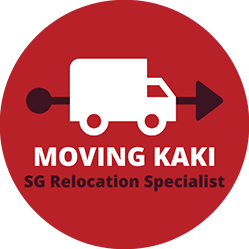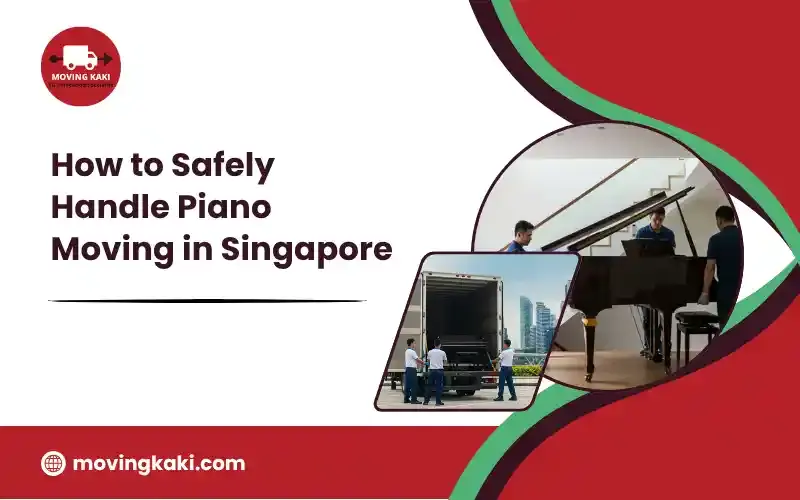Moving a piano isn’t as simple as shifting regular furniture. These instruments are heavy, delicate, and valuable; one wrong move can cause serious damage. That’s why safe handling is so important.
In this guide, we’ll show you how to safely handle piano moving in Singapore, whether you’re doing it yourself or hiring professional piano movers. With the proper steps, your move can be smooth, safe, and stress-free.
What Makes Piano Moving So Special?
Pianos look strong, but they are very delicate on the inside. Each piano has thousands of tiny parts that can get damaged if the move isn’t done right. Additionally, most pianos are quite heavy, with some weighing over 300 kg.
Trying to move a piano yourself can be dangerous. You could hurt your back or damage the piano. That’s why it’s best to hire a piano mover who knows how to do the job safely.
Step 1: Choose Professional Piano Movers
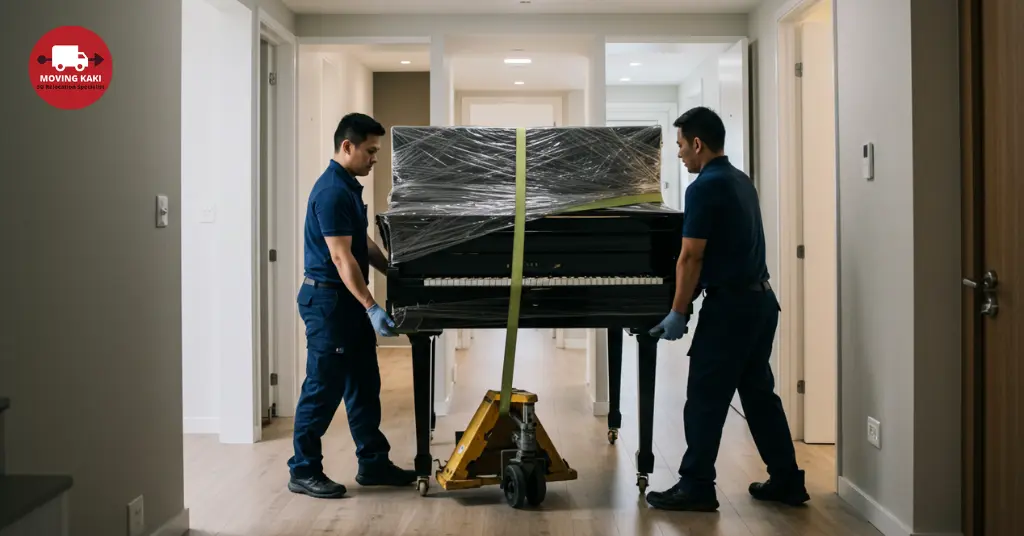
Moving a piano is not a simple job. Pianos are heavy, delicate, and often expensive. They require careful handling and the right tools. That’s why the most important step is choosing professional piano movers who are trained for the task.
Unlike regular movers, piano moving experts know how to:
- Use special piano trolleys, straps, and lifting boards
- Wrap the piano in thick blankets to protect the surface
- Handle narrow hallways, stairs, and tight corners safely
- Load and unload without tipping, shaking, or damaging the piano
Choosing the wrong team can lead to costly repairs or injuries. That’s why experience matters. When looking for piano movers in Singapore, check for:
- Verified experience in moving different types of pianos
- Positive customer reviews and ratings
- Clear, transparent pricing
- Insurance coverage to protect your piano during the move
At Moving Kaki, we specialise in piano moving and understand the care your instrument requires. Whether you’re relocating an upright, baby grand, or digital piano, our trained movers use the right equipment and techniques to ensure it stays protected throughout the entire move. With Moving Kaki, you’re not just moving an item; you’re moving a part of your home, handled with care by experts.
Step 2: Get Ready Before Moving Day
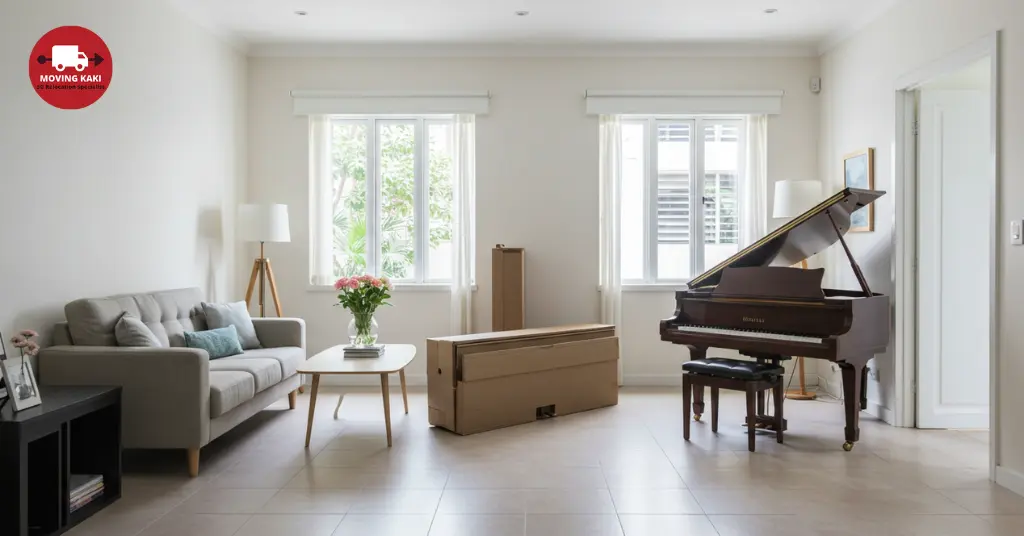
Before the movers arrive, it’s important to prepare your home. This helps make the move faster, smoother, and safer for both your piano and your property. Here’s what you should do:
1. Clear the Path
Walk through the space where the piano will be moved. Remove anything that might be in the way, like chairs, tables, rugs, or decorations. The movers require a clear, wide path from the piano to the front door to prevent tripping or damage.
2. Measure Doorways, Hallways, and Elevators
Use a measuring tape to check the size of all doorways, hallways, and lifts the piano will pass through. Write down the measurements and share them with your piano movers. This helps them plan and bring the right tools. It also prevents problems on moving day, like getting stuck in a tight space.
3. Inform Your Building or Condo
If you live in a high-rise building, check with your building management first. Many buildings have rules regarding the movement of large items. You may need to book the service lift or get permission to move during certain hours. Let the movers know what your building requires so they can follow the rules.
4. Protect Your Floors and Walls
Pianos are very heavy, and the moving tools (like trolleys or dollies) can scratch floors. Lay down blankets, cardboard sheets, or moving mats on the floors where the movers will walk. You can also use corner guards to protect walls and door frames from bumps or scrapes.
Step 3: Let the Movers Do Their Job
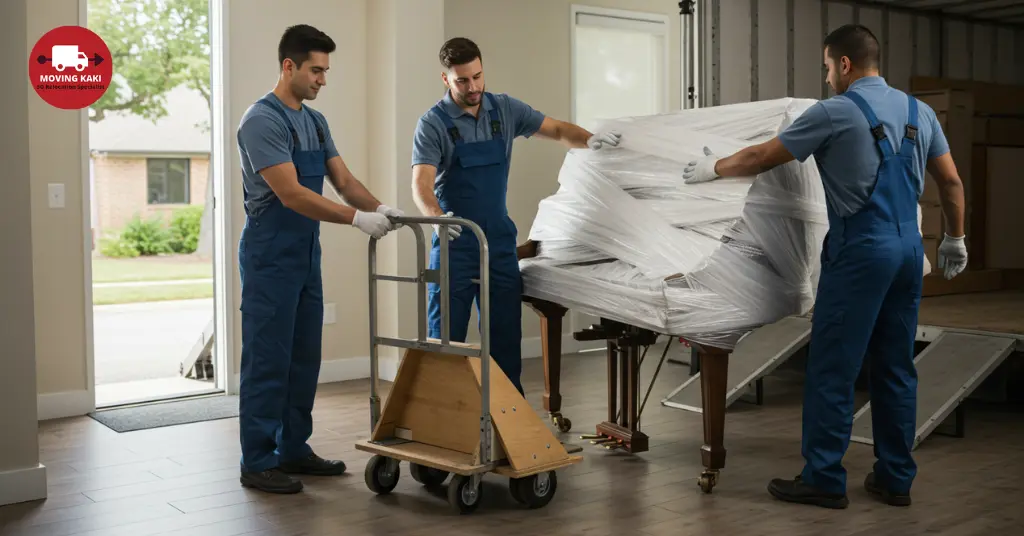
When the movers arrive, you don’t need to help lift the piano. It’s safer if you don’t. Piano movers are trained to handle the weight and know how to protect your instrument.
Here’s what they’ll usually do:
- Wrap the piano in soft padding
- Use a dolly or trolley to roll it out
- Secure it properly inside the truck
- Use ramps if needed for stairs or uneven ground
This is why hiring the right moving company with expertise in piano transportation matters. They ensure your instrument stays safe and undamaged, even during long-distance moves.
Step 4: Unload and Position the Piano in Its New Location
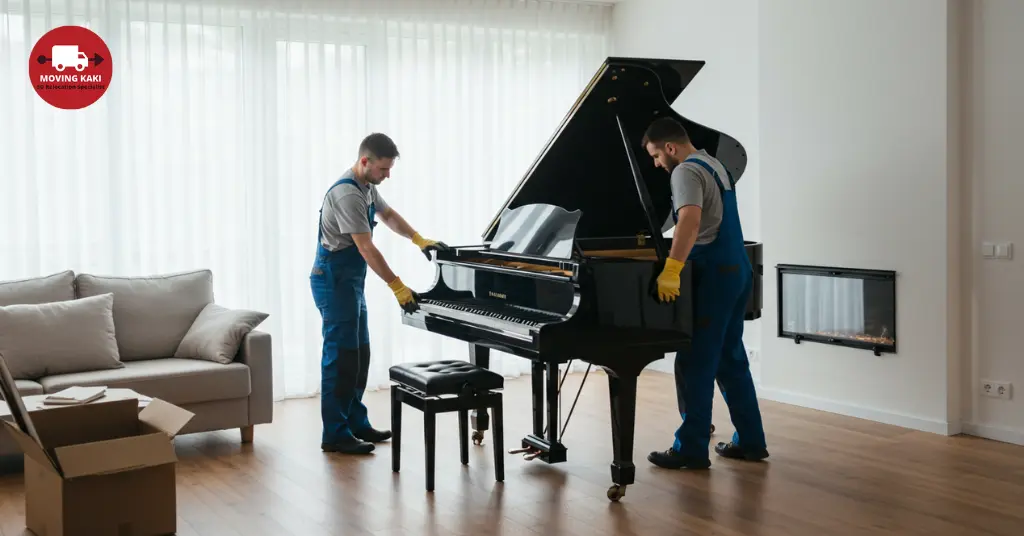
The final step is getting your piano correctly set up in its new space. After unloading, the movers will carefully bring it inside and reassemble any parts that were removed, such as the legs or pedals.
Here’s what to keep in mind during this stage:
- Place the piano on a flat, stable surface
- Avoid direct sunlight, heat sources, or damp walls
- Give it some space around the sides for better sound and airflow
- Ask the movers to check that the piano is level and sturdy
Where you place your piano can affect both its sound and lifespan. The right spot will help protect the wood, keep it in tune longer, and make it a beautiful part of your new space.
Extra Tips to Make Piano Moving Safer and Easier
Here are some extra piano moving tips to make your move even better:
- Always book your movers early; don’t wait until the last minute.
- Take pictures of your piano before moving, just in case.
- Keep kids and pets away from the moving area.
- Ask the movers for advice on where to place the piano in the new space.
- Avoid placing the piano near windows, heaters, or damp walls.
Conclusion:
Moving a piano requires more than just physical strength; it also requires experience, the right tools, and careful planning. By choosing expert piano movers in Singapore, preparing your space, and following the proper steps before and after the move, you can make the entire process smooth and worry-free. At Moving Kaki, we understand how important your piano is, whether it’s a family treasure, a teaching tool, or simply part of your daily routine. Our trained team treats every instrument with care, so it arrives safely and ready to play in its new home.
Pianos are not only heavy but also delicate. A slight mistake can lead to severe damage or injury. They require specialised lifting tools and trained professionals to be moved safely. It’s best to leave it to professional piano movers who know what they’re doing.
FAQs
Why can’t I move a piano by myself?
Pianos are not only heavy but also delicate. A slight mistake can lead to severe damage or injury. They require specialised lifting tools and trained professionals to be moved safely. It’s best to leave it to professional piano movers who know what they’re doing.
How long does it take to move a piano?
It depends on the type of piano and the layout of your home. On average, moving a piano can take 1 to 3 hours, including wrapping, lifting, loading, and unloading. Complex spaces or staircases may require more time.
Can any moving company move my piano?
No, not all movers are trained to handle pianos. You should hire movers who specialise in piano transportation. They’ll have the proper equipment and experience to protect your instrument during the move.
Do I need to tune my piano after the move?
Yes. Most pianos go slightly out of tune after a move due to changes in temperature, humidity, and vibrations. Wait 3–5 days after the move before calling a tuner to allow the piano to settle.
How much does it cost to move a piano in Singapore?
Digital pianos typically cost SGD $80–$100, upright pianos SGD $110–$120, and baby grand pianos range from SGD $200 to $350. Additional charges may apply for stairs (SGD $50–$150), tuning (SGD $100–$300), and insurance (SGD $50). The cost to move a piano in Singapore varies based on the type and distance. For an accurate quote, contact local movers with your specific details.
